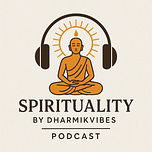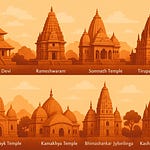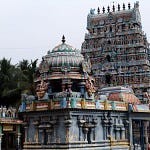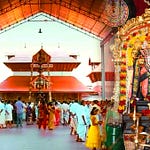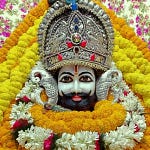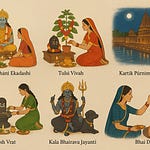There are few spectacles in the world that blend devotion, culture, art, and eternity quite like Dev Deepawali in Varanasi.
Held each year on Kartik Purnima, the full moon night that falls fifteen days after Diwali, this festival is known as the “Diwali of the Gods.”
While Diwali across India celebrates Lord Rama’s return to Ayodhya, Dev Deepawali in Varanasi celebrates something far greater - the descent of the divine to Earth itself.
On this sacred night, it is believed that the devas (celestial beings) come down from heaven to bathe in the holy waters of the Ganges. The people of Varanasi, the city of Shiva, welcome them not with grandeur or luxury - but with light. Millions of small earthen lamps (diyas) are placed along the ghats, illuminating every step and corner of the sacred riverbank.
As these flames flicker against the night sky, the Ganga seems to shimmer with the reflection of heaven itself.
The Historical and Mythological Origins
The origins of Dev Deepawali trace back to the Puranic legend of Lord Shiva’s victory over the demon Tripurasura.
Tripurasura, after gaining boons from Lord Brahma, conquered all three worlds - heaven, earth, and the underworld - and cast darkness upon them. In response, Lord Shiva mounted his celestial chariot and destroyed the three demon cities with a single arrow. The event, known as Tripurari Purnima, symbolized the destruction of arrogance and ignorance through divine light.
It is said that when the battle ended, the gods themselves descended to the banks of the Ganga in Kashi to offer gratitude to Lord Shiva.
The people of Varanasi lit lamps to celebrate this victory of dharma over adharma, good over evil, and light over darkness - a tradition that continues to this day.
Over the centuries, this divine commemoration evolved into the Dev Deepawali Mahotsav, transforming Varanasi into a cosmic theatre of light, faith, and music.
Varanasi – The Eternal City of Light
To understand Dev Deepawali, one must understand Kashi (Varanasi) itself - believed to be the oldest continuously inhabited city in the world.
It is said that Lord Shiva himself established Kashi upon his trident, making it a bridge between moksha (liberation) and the mortal world. The city, with its labyrinthine lanes, sacred ghats, and temple bells, has witnessed the rise and fall of empires, yet its spiritual pulse has never dimmed.
During Dev Deepawali, this eternal city transcends time. The 84 ghats that line the river - from Assi Ghat in the south to Raj Ghat in the north - become radiant pathways of devotion.
Every step, every stone, seems to breathe with centuries of prayers.
Temples resound with Vedic chants, priests perform Ganga Aarti in perfect rhythm, and the fragrance of sandalwood, camphor, and incense lingers in the cool November air. The sight is overwhelming - a thousand lamps shimmering on water, and a thousand hearts glowing in unison.
The Cultural Celebration: Where Devotion Meets Art
Dev Deepawali is not only a religious observance; it is also a profound cultural celebration.
For days leading up to Kartik Purnima, the city prepares like a living organism - ghats are cleaned, temples are decorated with marigolds and mango leaves, and artisans craft clay lamps by the thousands.
Rituals and Highlights
Deep Daan: The lighting of lamps by devotees along the riverbanks, offered as a symbol of gratitude and devotion.
Ganga Aarti: Conducted on a grand scale at ghats like Dashashwamedh, Assi, and Rajendra Prasad, where priests perform synchronized rituals with conch shells, bells, and fire lamps.
Spiritual Bath: Pilgrims take a holy dip in the Ganga, believed to wash away sins and grant divine blessings.
Cultural Performances: Classical music, dance, and chanting fill the air as artists perform under the moonlight - a tradition supported by the Ganga Mahotsav, a parallel festival celebrating the arts of India.
Together, these events make Varanasi an open-air temple - where every note, every flame, and every prayer merges into the eternal rhythm of devotion.
Ganga Mahotsav – The Prelude to Dev Deepawali
The Ganga Mahotsav, held in the days leading up to Dev Deepawali, adds another layer of grandeur.
This five-day cultural festival celebrates the Ganga as a goddess, mother, and muse.
It features performances by renowned Indian classical musicians, folk artists, and dancers, transforming the ghats into stages for cultural harmony.
On the final night, as the full moon of Kartik Purnima rises, Dev Deepawali begins - uniting pilgrims, travelers, and locals in a shared sense of reverence.
The Experience: When the River Becomes the Sky
At twilight, just before the Aarti, the city enters an almost sacred silence.
Then, as conch shells blow, thousands of hands lower diyas onto the river - one by one, until the Ganges becomes a galaxy of living light.
From the boats floating midstream, it appears as though the river and the stars have merged.
Every ghat glows with spiritual energy - Manikarnika, the cremation ghat symbolizing liberation, Assi Ghat, where life begins anew, and Dashashwamedh, where Lord Brahma is believed to have performed the ancient horse sacrifice.
Each flame tells a story of faith, of souls seeking light amidst the darkness of the material world.
Cultural and Spiritual Significance
Dev Deepawali holds deep philosophical meaning in Hindu thought.
It is not only the festival of light but also a metaphor for inner awakening - the triumph of knowledge over ignorance.
The lighting of each lamp represents the illumination of the Atman (soul), a reminder that divinity resides within.
In the ancient scriptures, it is said that performing Deep Daan on this night grants punya (spiritual merit) equal to performing a thousand yajnas.
For devotees, it is a chance to connect directly with the divine, to seek liberation from worldly cycles, and to honor the sanctity of the Ganga - the river that carries prayers to the heavens.
Travel & Practical Guide
Best Time to Visit
Dev Deepawali Date: Wednesday, 5 November 2025
Ganga Mahotsav: 1–5 November 2025 (culminating on Dev Deepawali night)
Weather
November in Varanasi is calm and pleasant:
Daytime: 26°C – 30°C
Night: 13°C – 17°C
Evenings on the river can be cool, especially during the boat ride. Carry a woollen jacket, shawl, or light sweater for warmth.
How to Reach
By Air: Varanasi’s Lal Bahadur Shastri International Airport connects directly with major cities like Delhi, Mumbai, and Kolkata.
By Train: Frequent trains from Delhi (including Vande Bharat and Rajdhani Express) offer scenic and comfortable journeys.
By Road: Varanasi is well-connected via NH19 and NH31 to Allahabad, Ayodhya, and Patna.
Where to Stay
Accommodation options range from serene riverfront heritage hotels to modern boutique stays near Assi and Dashashwamedh Ghats. Early booking is essential due to high festival demand.
What to Do
Attend Ganga Aarti at Dashashwamedh or Assi Ghat.
Visit Sarnath, where Buddha preached his first sermon.
Explore BHU campus, Bharat Kala Bhawan, and Ramnagar Fort.
Take a boat ride during sunrise or on Dev Deepawali night for a panoramic view of the glowing ghats.
Experience Banarasi silk weaving, classical music concerts, and local cuisine at heritage eateries.
What to Carry
Comfortable footwear and modest clothing (shoulders and knees covered).
Warm clothing for evenings.
A reusable water bottle and eco-friendly bag.
Cash in small denominations for offerings and local purchases.
Avoid plastic, smoking, or alcohol near ghats.
Witnessing the Divine from the River
Many travelers consider viewing Dev Deepawali from a boat on the Ganga to be the most awe-inspiring experience.
Shared and private cruises begin at sunset and last around three hours, offering views of illuminated ghats, synchronized Aartis, and fireworks reflecting across the water.
Boarding usually takes place at Ravidas Ghat or Raj Ghat, with safety equipment, refreshments, and guides provided.
As the moon rises, every flame on the river seems to whisper a prayer - a call to the soul to awaken.
The Spiritual Essence
Beyond the spectacle, Dev Deepawali embodies the universal message of light conquering darkness - a call for every soul to seek illumination within.
The diyas burning along the Ganges are not merely decorations; they are offerings of faith, each representing the triumph of love, compassion, and truth over ego and ignorance.
To stand upon the ghats on that full-moon night is to realize that Varanasi is not a city you visit - it is an experience that transforms you.
And Dev Deepawali is its brightest heartbeat - a night when heaven truly meets earth.

